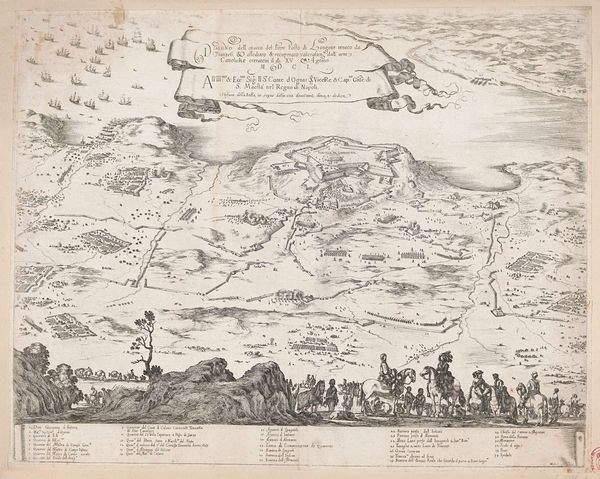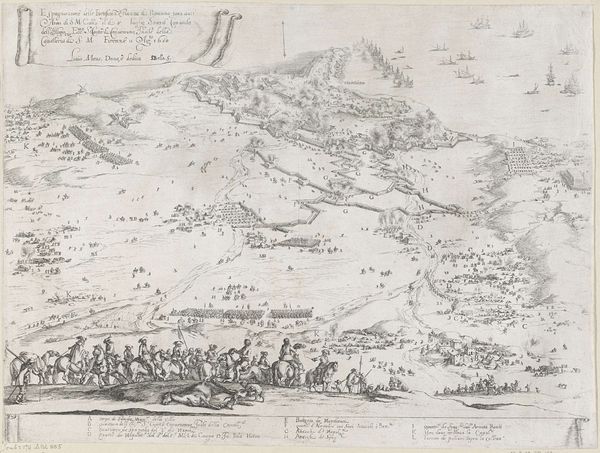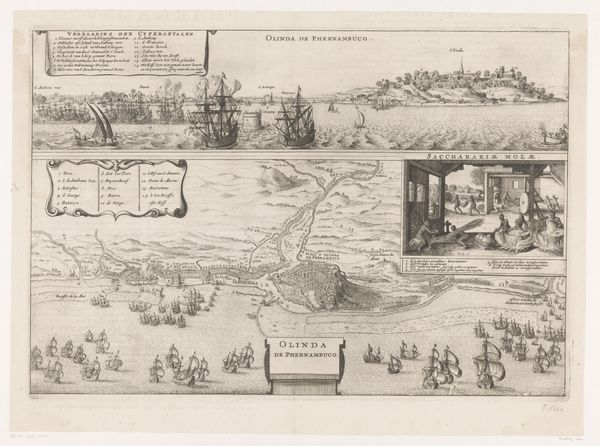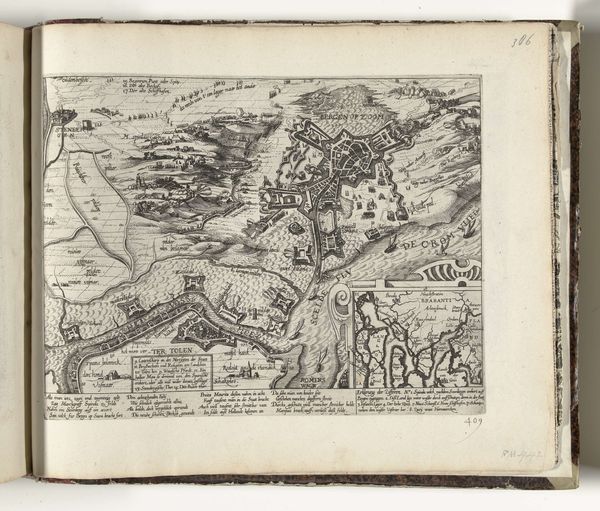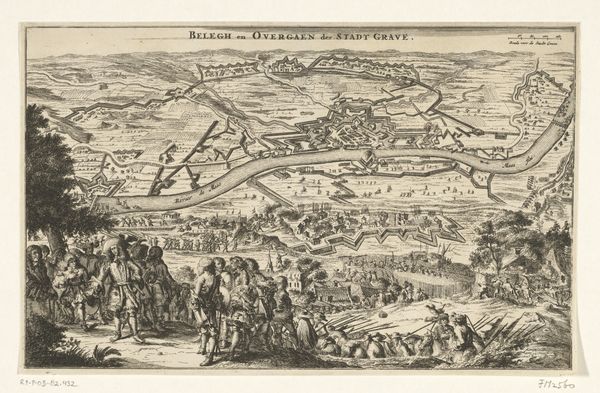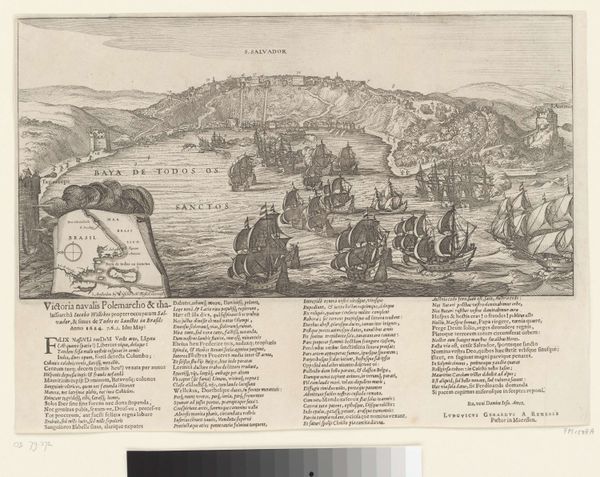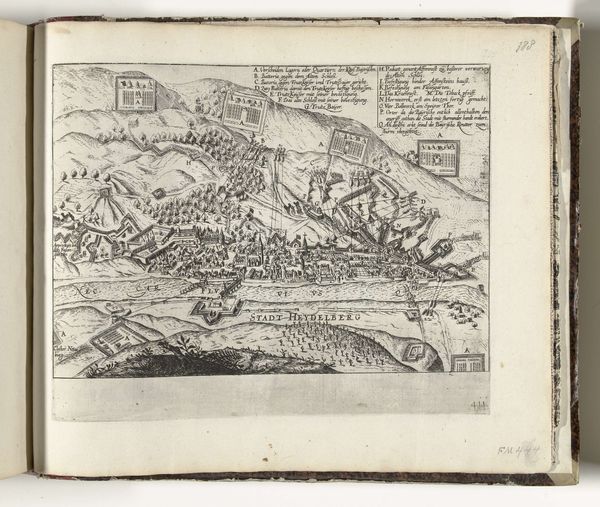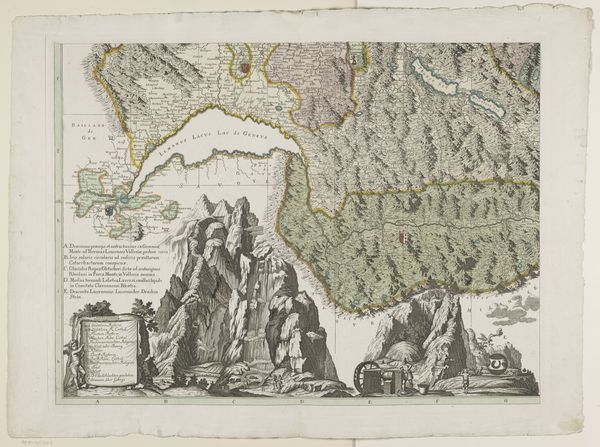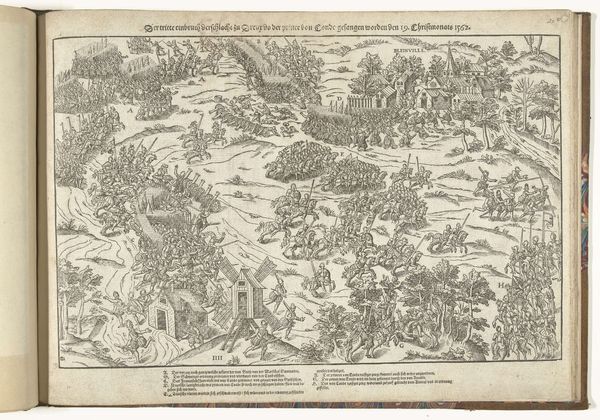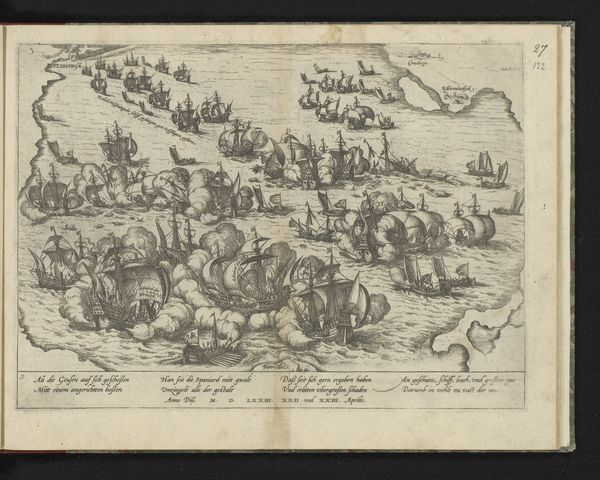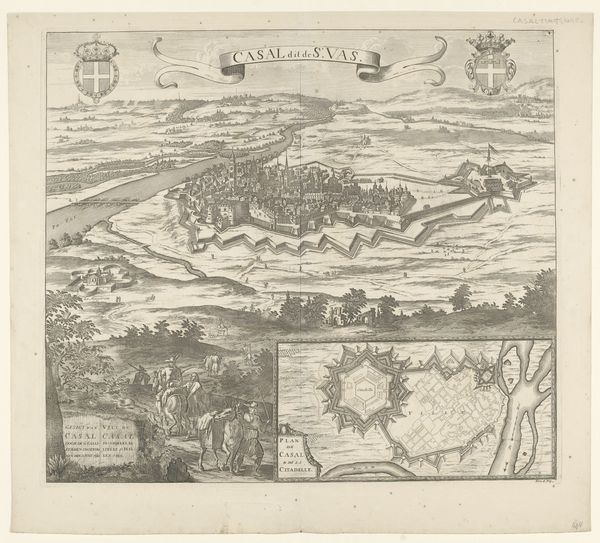
print, engraving
#
dutch-golden-age
# print
#
landscape
#
line
#
cityscape
#
history-painting
#
engraving
#
realism
Dimensions: height 285 mm, width 373 mm
Copyright: Rijks Museum: Open Domain
Coenraet Decker's "Siege of Grave by William III," made in 1674, offers more than just a depiction of military strategy; it shows a cultural dialogue expressed through symbols of power and conflict. Note the star-shaped fortress, a design ubiquitous in the 17th century. This shape is not merely functional; it is an emblem, a symbol of man's attempt to impose order and control upon the chaos of war. These fortress designs can be traced back to the Renaissance. The flags, symbols of national identity and military might, echo through centuries, harkening back to ancient Roman standards and medieval heraldry. Each emblem on those flags is steeped in history, resonating with a collective memory of past victories and defeats. Consider, too, the psychological weight of siege warfare. The image evokes a sense of intense psychological pressure—the claustrophobia of the besieged, the relentless aggression of the besiegers—an emotional theater played out on the human psyche. This cyclical progression, this recurrence of symbols in different guises, reveals the enduring human obsession with power, conflict, and the quest for order. This is how history imprints itself upon our subconscious, shaping our perceptions and responses to the world.
Comments
No comments
Be the first to comment and join the conversation on the ultimate creative platform.
